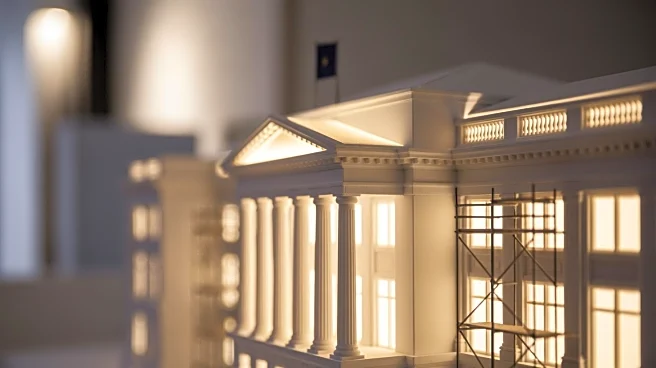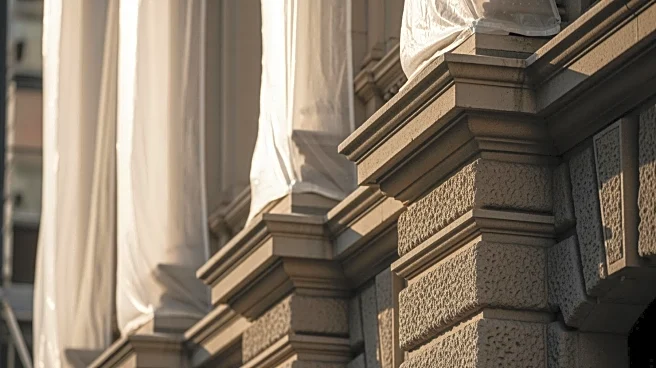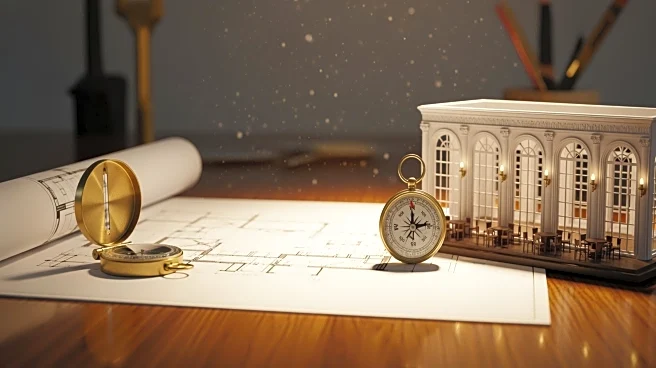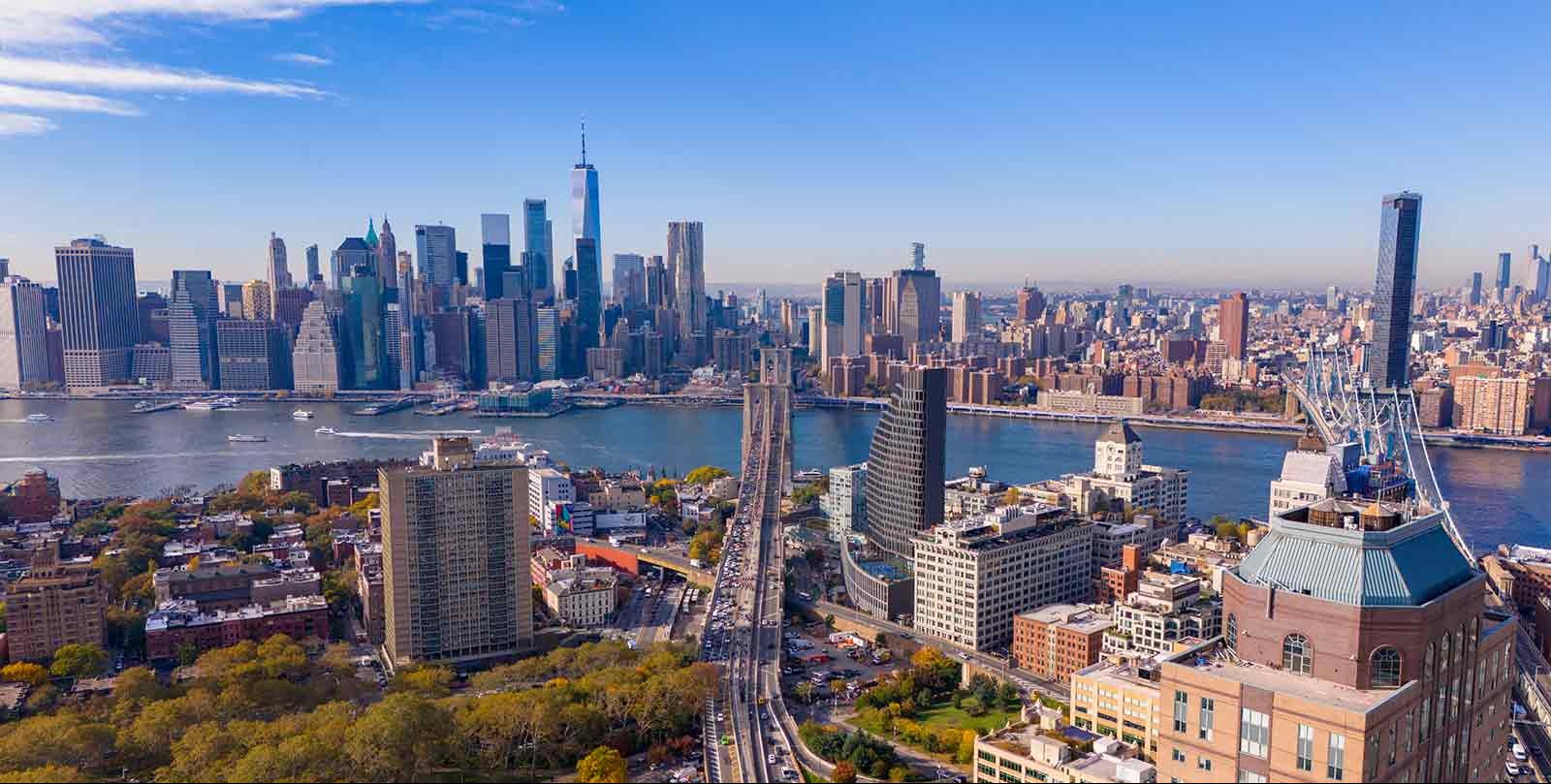What's Happening?
The White House is undergoing renovations to its East Wing, traditionally used as the first lady's offices, to construct a 90,000-square-foot ballroom. This project, initiated by President Trump, aims
to provide a venue for large-scale events without the need for temporary tents. The demolition of the East Wing has sparked controversy, with critics expressing concern over the lack of public input and the historical significance of the structure. The National Trust for Historic Preservation has urged a pause in demolition until public review of the plans. Despite the backlash, the White House defends the project as a necessary addition funded by private donors, including major tech companies.
Why It's Important?
The renovation of the White House's East Wing has significant implications for historical preservation and public engagement in government projects. Critics argue that the demolition of a historically significant structure without public input undermines democratic processes and the preservation of national heritage. The project, funded by private donors, raises questions about the influence of corporate interests in government decisions. Additionally, the construction of a large ballroom reflects a shift in the White House's approach to hosting international events, potentially enhancing its capacity to engage with global leaders.
What's Next?
The completion of the ballroom is expected to enhance the White House's ability to host large-scale events, potentially increasing its diplomatic engagements. However, ongoing criticism may lead to further scrutiny of the project's impact on historical preservation and public involvement in government decisions. Stakeholders, including preservationists and political leaders, may continue to advocate for transparency and public input in future government projects.
Beyond the Headlines
The renovation project highlights broader ethical and cultural dimensions, such as the balance between modernization and historical preservation. It also raises questions about the role of private funding in public projects and the potential influence of corporate interests on government decisions. The controversy may prompt discussions on the importance of preserving national heritage while accommodating modern needs.













